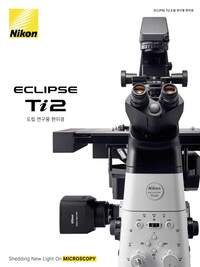- ko Change Region
- Global Site
애플리케이션 노트
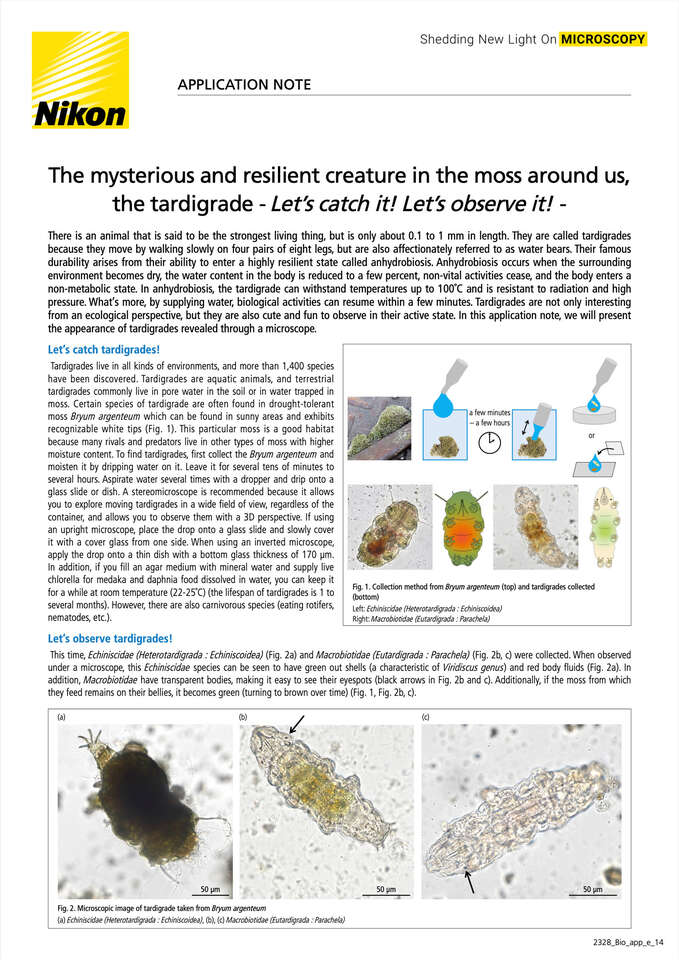
The mysterious and resilient creature in the moss around us, the tardigrade - Let's catch it! Let's observe it! -
2024 년 06 월
There is an animal that is said to be the strongest living thing, but is only about 0.1 to 1 mm in length. They are called tardigrades because they move by walking slowly on four pairs of eight legs, but are also affectionately referred to as water bears. Their famous durability arises from their ability to enter a highly resilient state called anhydrobiosis. Anhydrobiosis occurs when the surrounding environment becomes dry, the water content in the body is reduced to a few percent, non-vital activities cease, and the body enters a non-metabolic state. In anhydrobiosis, the tardigrade can withstand temperatures up to 100℃ and is resistant to radiation and high pressure. What's more, by supplying water, biological activities can resume within a few minutes. Tardigrades are not only interesting from an ecological perspective, but they are also cute and fun to observe in their active state. In this application note, we will present the appearance of tardigrades revealed through a microscope.
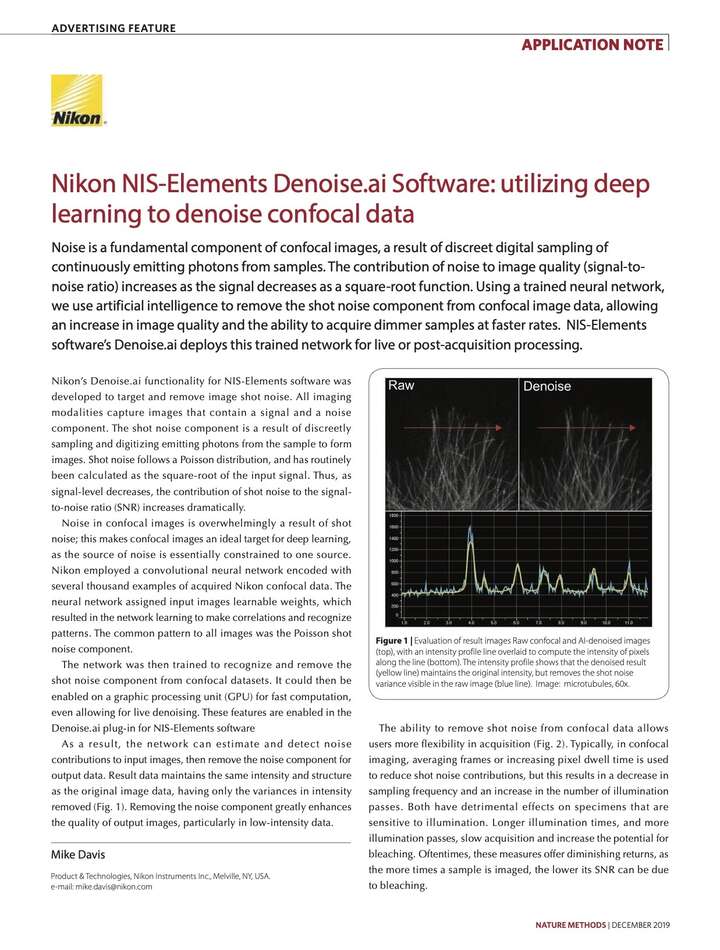
니콘 NIS-Elements Denoise.ai 소프트웨어: 딥러닝을 이용하여 공초점 데이터의 노이즈 제거
2020 년 01 월
노이즈는 공초점 이미지의 기본 구성 요소이며, 표본에서 지속적으로 방출되는 광자를 디지털로 개별 샘플링할 때 발생하는 결과물입니다. 노이즈가 이미지 품질에 미치는 영향(신호 대 노이즈 비)은 신호가 약해질수록 제곱근 함수에 따라 증가합니다. 학습된 신경망을 사용하여, 니콘은 인공 지능을 이용해 공초점 이미지 데이터에서 샷 노이즈 구성 요소를 제거함으로써 이미지 품질을 높이고 더 어두운 샘플을 더 빠른 속도로 얻을 수 있습니다. NIS-Elements Denoise.ai는 이 학습된 신경망을 실시간 또는 촬영 후 처리에 이용합니다.
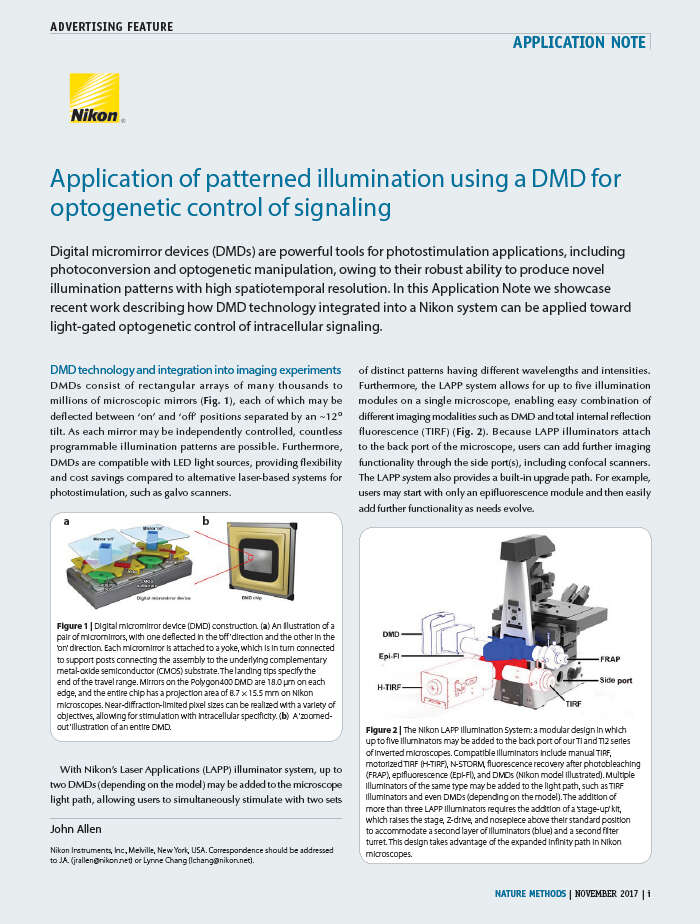
신호의 광유전자 제어에 DMD를 사용한 패턴 조명 응용
2017 년 11 월
DMD(디지털 마이크로미러 장치)는 높은 시공간 해상도로 새로운 조명 패턴을 생성하는 강력한 기능으로 인해 광변환 및 광유전학 조작을 포함한 광자극 애플리케이션을 위한 강력한 도구입니다. 이 애플리케이션 노트에서 당사는 니콘 시스템에 통합된 DMD 기술이 세포 내 신호의 라이트 게이트 광유전학적 제어에 적용될 수 있는 방법을 설명하는 최근 작업을 보여줍니다.
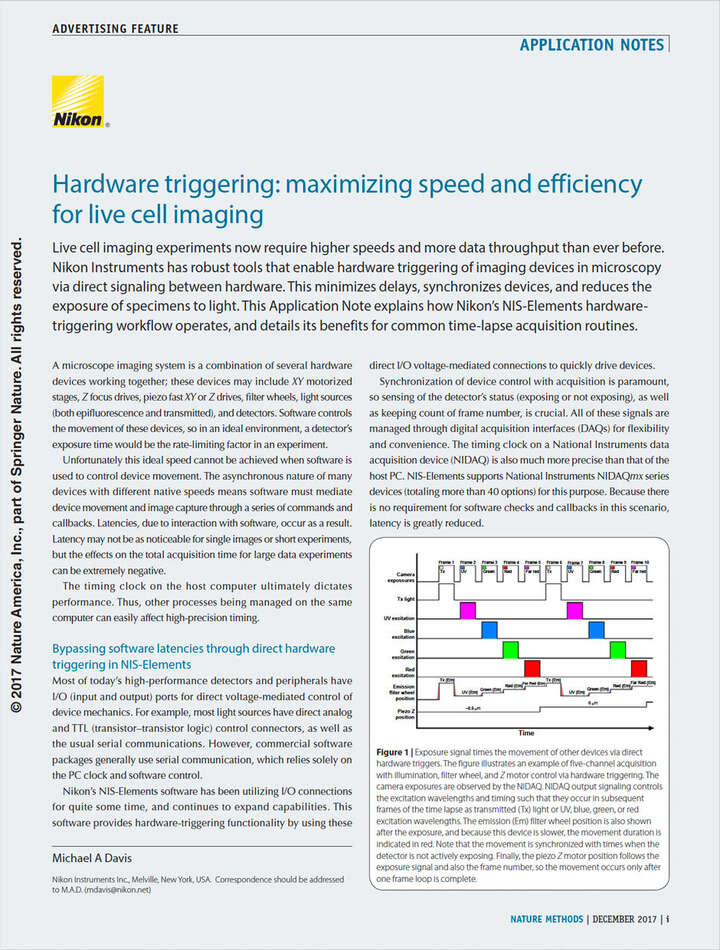
하드웨어 트리거링: 라이브 셀 이미징의 최고 속도와 효율성
2017 년 12 월
라이브 셀 이미징에는 이제 그 어느 때보다도 더 빠른 속도와 더 많은 데이터 처리량이 필요합니다. 니콘 Instruments는 현미경 관찰 시에 하드웨어 간 직접 신호 전송을 통해 이미징 장치의 하드웨어 트리거링을 지원하는 강력한 도구를 제공하여 지연을 최소화하고, 장치를 동기화하고, 표본의 광노출을 줄입니다. 이 애플리케이션 노트에서는 니콘의 NIS-Elements 하드웨어 트리거링 워크플로가 어떻게 작동하는지 설명하고 이 기능이 일반적인 타임랩스 촬영 루틴에 어떤 이점을 가져오는지 자세히 설명합니다.
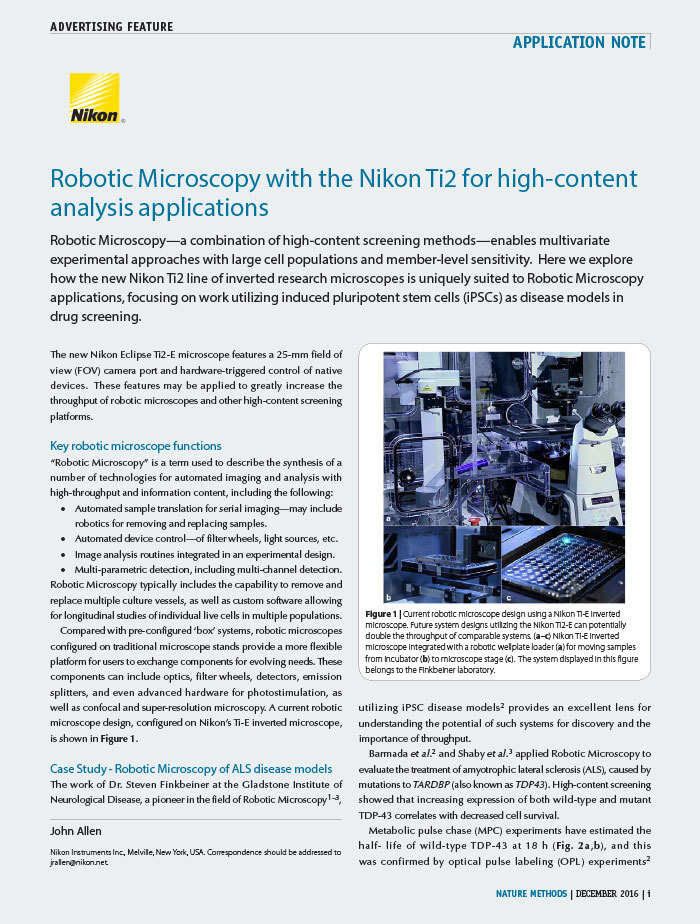
고함량 분석 용도를 위한 니콘 Ti2를 사용한 로봇 현미경법
2016 년 12 월
로봇 현미경법(여러 고함량 스크리닝 방법의 조합)은 큰 세포 모집단을 사용한 다변량 실험 방식을 멤버 레벨 감도로 지원합니다. 여기서는 iPSC(유도 만능 줄기 세포)를 약물 스크리닝의 질병 모델로 이용한 연구에 초점을 맞춰 새로운 니콘 Ti2 연구용 도립 현미경 제품군이 로봇 현미경법 용도에 특별히 적합한 이유를 탐구합니다.


